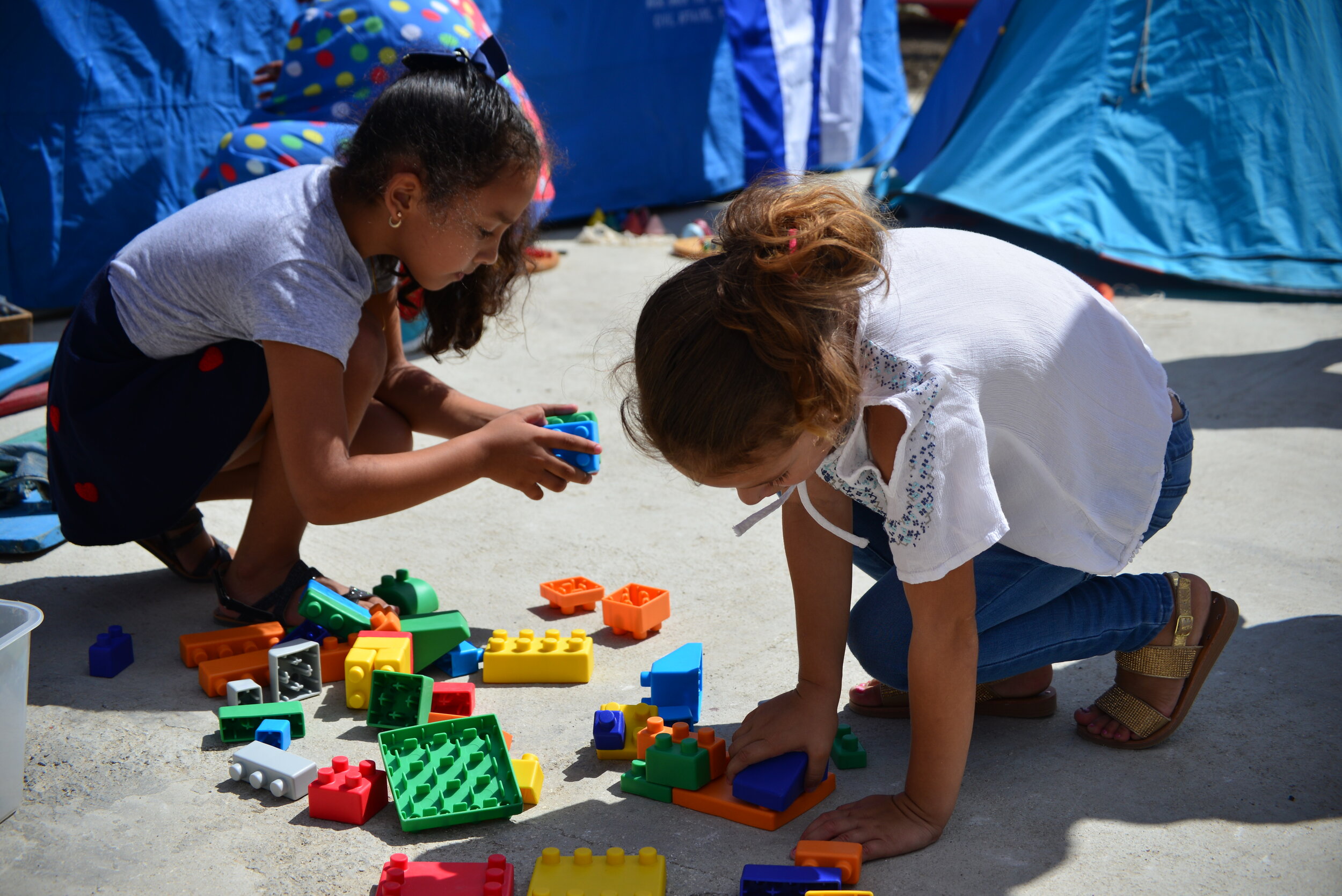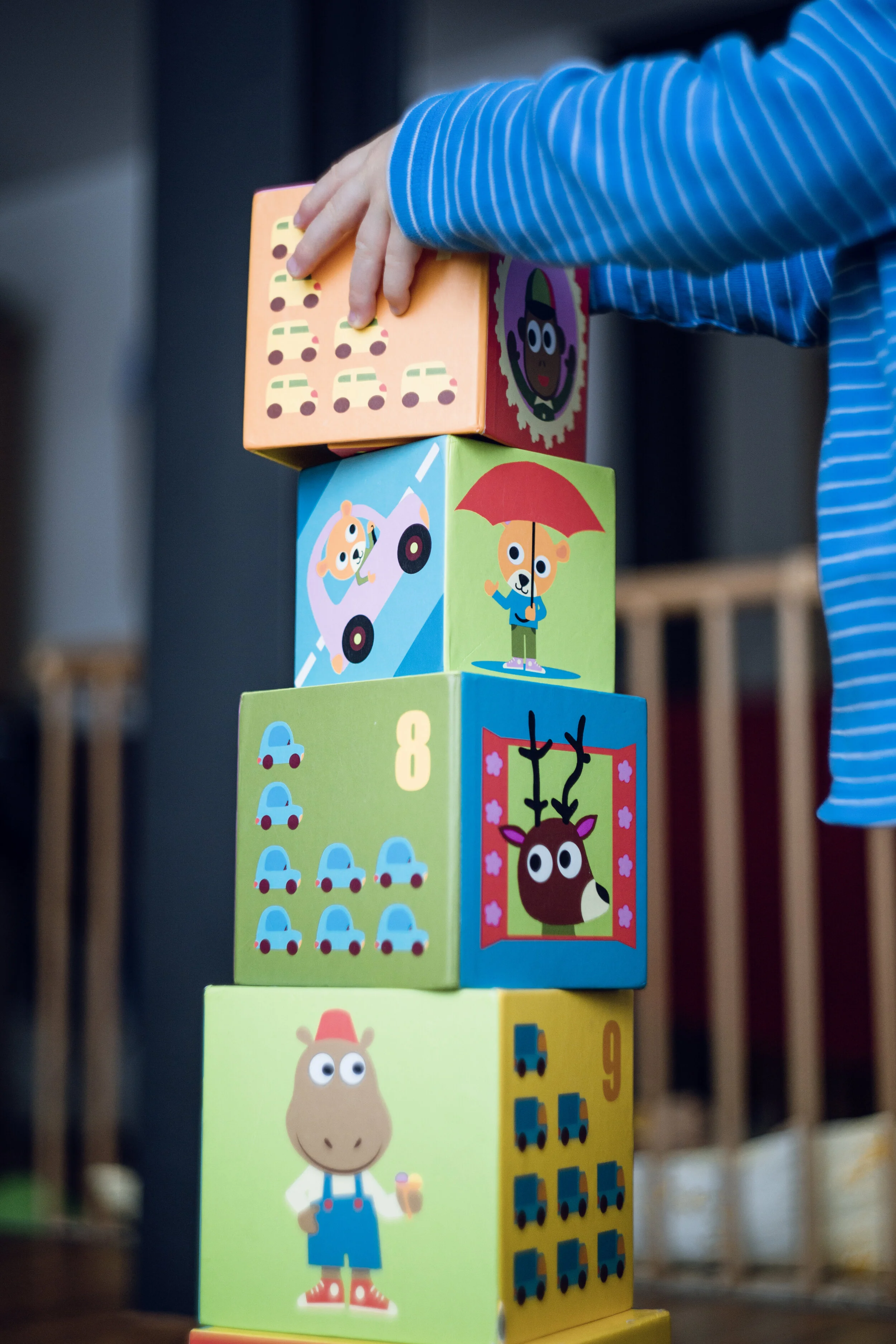I really believe that kids benefit from having access to a diverse array of toys, regardless of their gender. Play therapists are fond of saying that “toys are a child’s words.” If this is the case, why not supply them with the broadest vocabulary we can? In this post, I’ll be digging into whether there really is such a thing as “boy toys” and “girl toys” and sharing some of the benefits of giving kids of all genders more play options.
Common Myths About Raising Boys
Not too long ago I was quoted in an article about old wives’ tales related to raising boys. While everyone has different values as a parent, some of the preconceived ideas we have about boys may not just be outdated, but actually negatively impacting their mental health. We inherit a lot of our ideas about gender from our own parents, which makes it easy for them to go unexamined. Their influence on our behavior can be pretty subtle, too, and we may pass on unhelpful ideas to kids without even realizing it.
One common misconception I hear in my therapy office is that playing with stereotypically “girly” toys might be damaging to boys or confuse them about their gender role. Parents are sometimes concerned about a male child’s interest in baby dolls or jewelry-making, or express that they want to make sure their child understands what it is to be a boy.
Will Playing with Girl Toys Confuse a Boy?
I can find no research to suggest that playing with toys has any influence on a child’s gender. Kids figure out their gender really early in life—by about two years old. Many psychologists believe that children learn about gender primarily by observing the behavior of the adults in their lives. While toys can help children to express their feelings, explore new ideas, and review what they’ve learned, playthings don’t have the power to shape a child’s gender identity.
It’s worth considering that many girls play with boy toys, enjoy more “masculine” rough-and-tumble sports, and aren’t as interested in girly play. Most people don’t think twice about a tomboy, or worry that boyish toys will impact her gender identity. It seems to be easier to think about girls enjoying “boy stuff” than when the roles are reversed. A lot of this might be rooted in old ideas about masculinity that aren’t super helpful to today’s boys.
Different Toys Teach Different Skills
Kids learn about the world and develop their cognitive abilities through the toys they play with. Research has found that toys aimed at girls and boys teach each gender different lessons, and encourage them to develop different types of skills through play. If your aim is for your child to grow up well-rounded, with strong cognitive, creative, and spatial skills, it makes sense to provide toys that promote all these types of learning.
How “Girl Toys” Shape Child Development
According to a study on girls’ and boys’ toys, “girly” toys tend to focus more on physical appearance and attractiveness. They were also more likely to promote nurturing, caregiving play, and to help children roleplay household skills like cooking and cleaning. If a little girl is only supplied with super-girly toys, she might strongly develop her nurturing skills but miss out on other areas of development. She might also get the idea that her appearance should be a top priority if she’s surrounded by toys that encourage this trait.
How “Boy Toys” Shape Child Development
The same study found that boys’ toys were more likely to be competitive, aggressive, and encourage risk-taking during play. Boys toys were also more likely to teach children about spatial relationships, science, and how to build structures. If a little boy is only given hyper-masculine toys, they may be exposed to lots of violent play that could encourage more aggressive reactions in real life. He might also miss out on some of the nurturing and family-oriented skills provided by more girly toys, which are important skills for future husbands and fathers to develop.
Interestingly, this study concluded that the toys that provided the best cognitive, artistic, musical, and physical enrichment for kids tended to be gender-neutral or slightly masculine toys. This means that having a variety of more neutral toys at home, along with a few strongly “girlish” or “boyish” items, is a good way to ensure kids have opportunities to develop all the skills they’ll need as they grow up.
Toy Stores Are Moving Away From Gendered Toy Aisles
While researching this post, I learned that for a good portion of the 70s and early 80s, toy stores did not market strongly gendered toys to kids. Before that time, especially in the 40s and 50s, toys tended to be strictly advertised as intended for little boys or little girls. In the mid-80s, the trend was picked back up, which might explain why I remember toy store aisles being clearly divided along pink and blue lines. Today, big chain stores like Target are changing their approach to selling toys, dividing items by type (dolls, trains, blocks) as opposed to by gender. While may not change the toys a child seeks out on a trip to the toy store, it might communicate that no toys are off-limits to consider when shopping.
What If My Son Is Really Into Trucks or My Daughter Loves Barbie—Is That OK?
It is OK! Kids like what they like. Plenty of little kids genuinely enjoy and are drawn to the toys designed for their gender. A study of infants showed that babies as young as 9 months old start to show a preference for gender-specific toys. This may mean that there are differences in biology between boys and girls that lead boys to be more interested in toys with wheels and moving parts, while girls prefer more fine-motor and nurturing play.
However, there’s also research to suggest that kids also learn from adults about what toys are acceptable for them to play with. In a study of 4-7 year old kids, children who were shown pictures of kids playing with toys: one group saw photos of boys and girls playing with gendered toys, while the other group saw photos of children playing together with all kinds of toys. Later, researchers asked the children about what toys boys and girls should play with. Children who had seen photos of kids playing with non-gender-specific toys were more likely to say that any child could play with any toy than the ones who’d seen gender-divided photos.
The bottom line: if you have a boy’s boy or a girly girl, that is great! Celebrate what they love, and provide some gender neutral toys to help them expand their learning. If you have a boy who loves dolls or a girl who loves trucks, that’s great too! Provide opportunities for all kids to broaden their horizons, and let them know that it’s OK for girls and boys to play with whatever toys they’d like.
Want to learn more about play therapy and how toys can help kids express themselves? Read my page on play therapy or drop me a line to inquire about scheduling an appointment.



